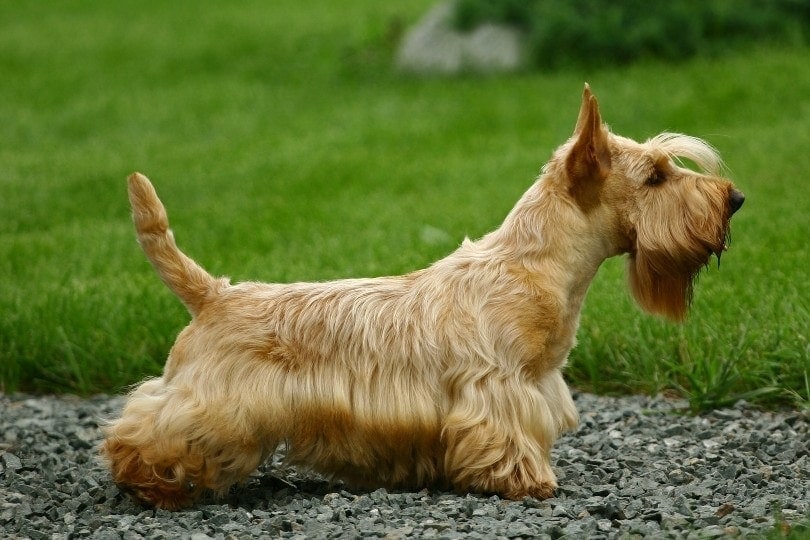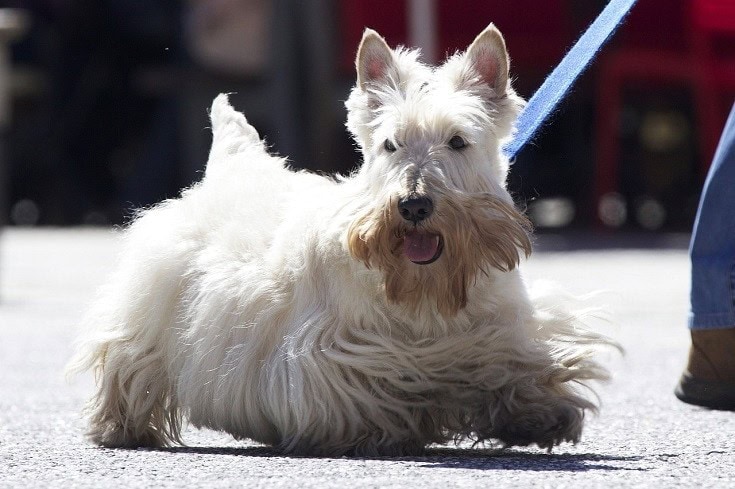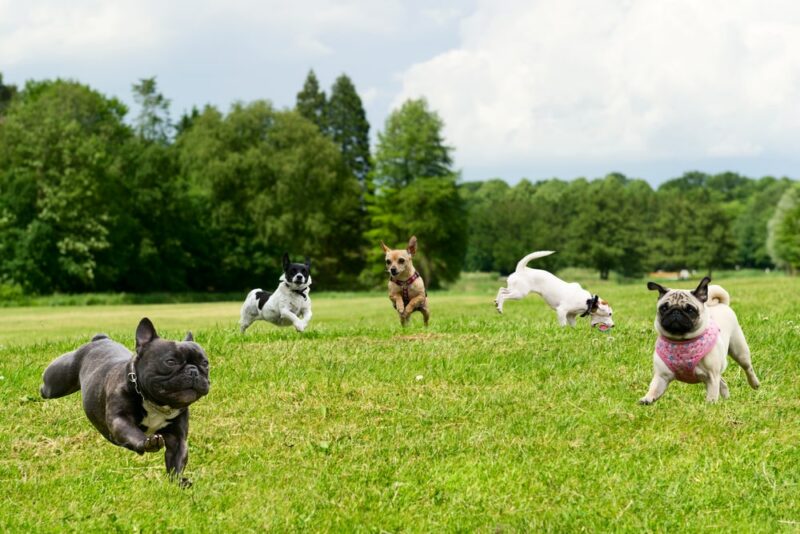How Big Do Scottish Terriers Get? Average Weight & Growth Chart

By Misty Layne
Updated on

Click to Skip Ahead
The Scottish Terrier is an excellent companion dog with a very distinctive look that can do well in both houses or smaller living spaces due to their size. Though this breed is only a medium one, if you aren’t that familiar with Scotties, you might be surprised by the size of a full-grown one. This is why having a good idea of just how big these dogs get is important. Knowing when they’ll reach full size is good to know, as well, so you can ensure your four-legged friend is growing as they should and hitting all weight and size goals. A fully grown Scottish Terrier weighs approximately 21.8–22 lbs.
That’s why we’ve gathered the data you need to measure these milestones into a handy growth and weight chart. However, keep in mind that even within the same breed, all dogs will grow a bit differently, so yours may grow slower or faster or be bigger or smaller than the norm. This chart is just the standard for the Scottish Terrier; with it, you’ll have a good idea of whether your pet is growing properly!
Scottish Terrier Overview

When you see a Scottish Terrier, you’ll know, due to this breed’s distinctive silhouette. Originally from Scotland, this breed is possibly the oldest Highland terrier breed. Though initially bred to be hunters of rats, badgers, and foxes, today, the Scottie makes an excellent companion that is terrifically loyal to its favorite people.
Known to have an almost human disposition at times, the Scottish Terrier breed is often in high spirits and incredibly confident. These pups also have a wide independent streak, so they enjoy doing things their way, which can sometimes lead to mini-clashes in the home. Scotties have a persistence and tenaciousness that have earned them the nickname “Diehard”.
Scottish Terrier Size and Growth Chart
This chart lists the standard weights of the Scottish Terrier as it ages. But keep in mind there are many variables that can affect your puppy’s development, including gender, breeding history, environmental factors, and health issues. If you find your Scottie is falling behind or getting ahead of the standards listed on this size and growth chart, you might consider speaking with your dog’s vet to determine if a medical reason could be the cause.
| Age | Weight Range |
| 1 month | 2.5 lbs |
| 2 months | 3.5–5.5 lbs |
| 3 months | 7.7–9.5 lbs |
| 4 months | 10.7–13 lbs |
| 5 months | 12–15 lbs |
| 6 months | 13–16 lbs |
| 7 months | 14–19 lbs |
| 8 months | 16–19 lbs |
| 9 months | 17–20.5 lbs |
| 10 months | 17–21 lbs |
| 11 months | 17–21.5 lbs |
| 12 months | 21.8–22 lbs |
When Does a Scottish Terrier Stop Growing?
Scottish Terriers reach their full size and weight by the age of 12 months, which is the norm for breeds of this size. When it comes to weight, though, you might see a bit more growth after 12 months. Your dog shouldn’t need to add more weight after 12 months, but this breed is sometimes prone to extra weight gain, so it’s a possibility.
If your pup does end up gaining more weight after the 12-month mark, check in with your vet to ensure things are fine with their health.
Factors Affecting the Size of Scottish Terriers
There are many different elements that can affect the size of a Scottish Terrier, such as environmental factors and genetics. When it comes to environmental factors, nutrition and diet play a vital role in a dog’s size. Without the proper nutrition during the puppy years (especially the first year of a dog’s life), its size could end up being below the average standard.
The sex of a dog also comes into play, as in most cases, males will be slightly larger than females (though not by much). Males normally weigh just a bit more than females, as well.
Breeding and genetics play a part in how big a Scottish Terrier gets, too. Due to genetics, every dog is different, even within the same breed, so some pups may be naturally smaller than their counterparts. And if a Scottish Terrier isn’t bred to meet the breed standards, it could be bigger or smaller than is typical. So, the final size of your Scottish Terrier can be affected by many things!

Ideal Diet for Maintaining a Healthy Weight
Because the Scottish Terrier can be prone to obesity, you’ll need to help keep yours at a healthy weight with a high-quality, high protein, breed or size-specific dog food that contains all the nutrients needed for your pet to grow as they should. Talk with your vet about how much food your Scottie will require each day, as every dog has different needs. Doing this will also reduce the risk of you overfeeding your pet!
Scotties can also be prone to digestive issues, so you might have to try a few different foods before you find one your dog can stomach. Ask your vet for food recommendations that might work best for your pet if you’re having trouble finding a suitable one.
How to Measure Your Scottish Terrier
Measuring a Scottish Terrier is relatively easy (though you will need to get your dog to stand still!). There is a standard way to measure canines, which is measuring from the ground to the highest point of the shoulder blade. So, grab a ruler or tape measure, stand your dog next to a wall, and measure from the feet to the highest point on the shoulder blade. And that’s it!
Conclusion
Now you know what to expect when it comes to your Scottish Terrier’s size and growth during the first year of their life! Being aware of what the size and weight milestones are for your dog’s breed will help you ensure that your pet is staying healthy and growing as they should. If you notice that your pet seems to be behind or ahead of size and weight goals, speak with your vet to be sure that nothing is going on with your pet’s health. Most of the time, these will simply be slight variations, though, as there are several factors that can affect how your Scottie grows.
And don’t forget to enjoy watching your pup grow up!
Featured Image Credit: Pavel Shlykov, Shutterstock












